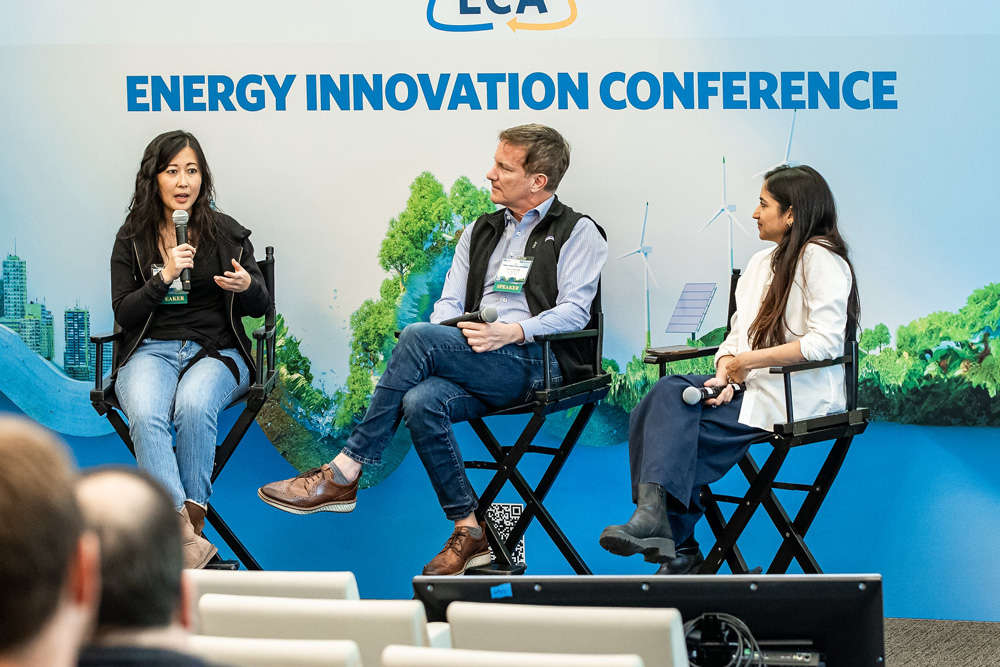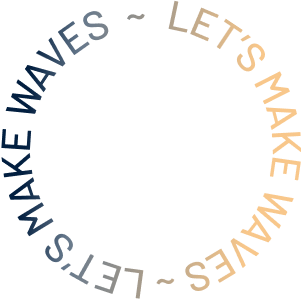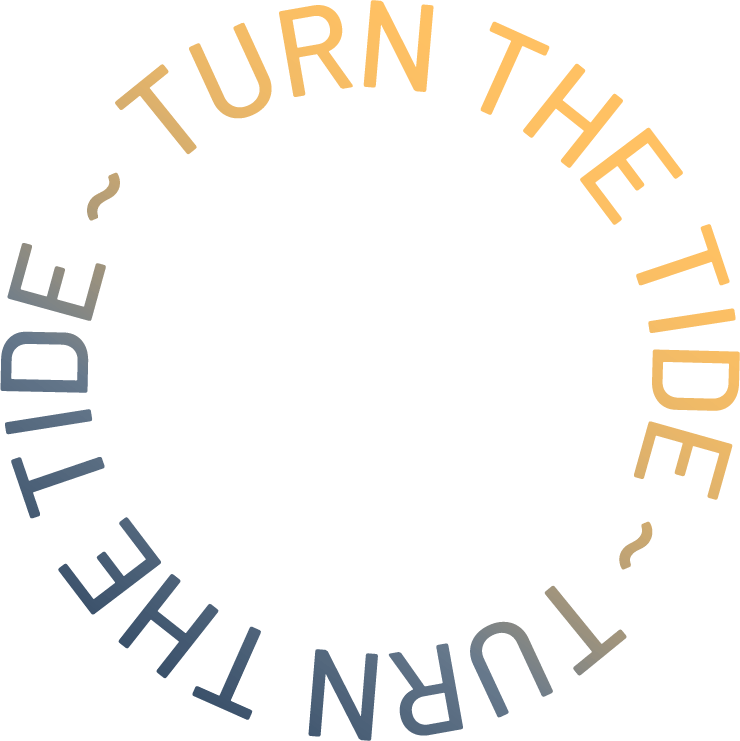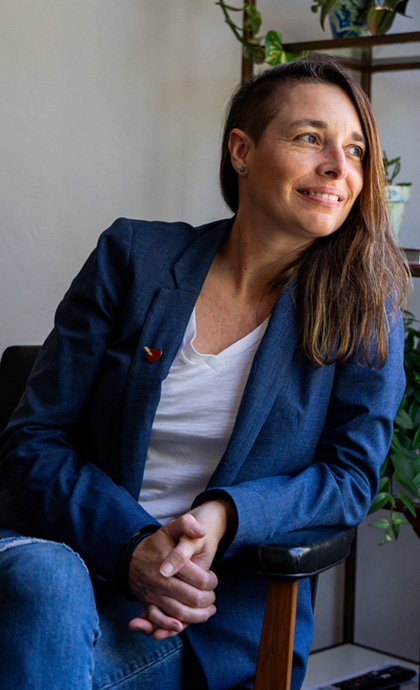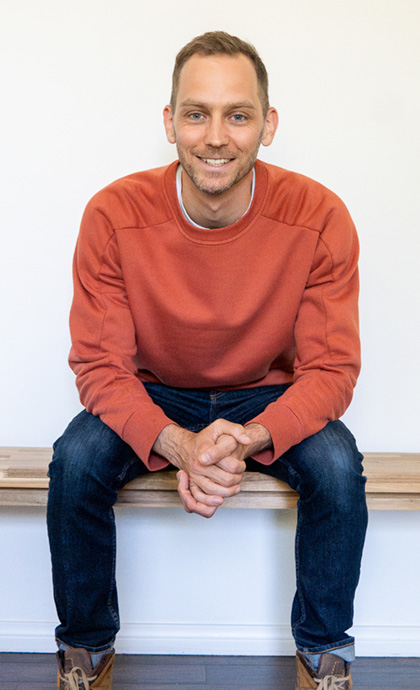Creative agency founder Jen Derks sums up lessons from UCLA’s Energy Innovation Conference
“Ah, I’ll be out of town on Friday, hanging out with trailblazers who are saving the planet.”
That was my response to a potential new client attempting to schedule a Friday call, who was in fact, one of said trailblazers. We found another time, where I learned about their novel energy storage solution, and we discussed the role of early-stage branding and design in helping them get more eyes on their solution, be it funders, employees or partners.
As the Creative Director + Founder of a sustainable creative agency, I love going to climate events and meeting the smart people who are working to save our world.
While at the conference – put on by UCLA Anderson’s Center for Impact and Energy & Cleantech Association – I asked a leader of an up and coming battery diagnostic technology company what role early stage branding had on their growth to-date? Her answer led to my first takeaway.
1. Find your minimum viable brand (MVB) and invest in it.
She hmmed a bit. “Well, one of our grant-funders had access to a video team and they made some videos to help explain what we’re doing. I think that helped a lot.” This team has secured over $15 million in grant funding according to Crunchbase. From what I gathered, the work they’re knee deep in right now is in improving their technology and funding that effort.
This is reflective of what we’ve seen in our work. For science-heavy climate solutions, investing early in an explainer video or infographic is often crucial. But, there’s not one answer for every company. Each company needs to consider what its MVB is at each stage. That’s why we position our early-stage branding and design offerings to be nimble, efficient, and iterative. This approach coupled with the encouragement of long-term brand thinking means that our clients start to see the future they want for their companies and themselves, and build on it over time, alongside the technology.
2. Look ahead. Design for now and the future.
As I sat comfortably in Crown Auditorium listening to the panel titled “SoCal Cleantech Startup Innovations,” my ears perked up because of a rare moment when marketing was actually mentioned when discussing what it takes to grow a company. Terry O’Day, Co-Founder and COO of InCharge Energy, said, “When it comes to marketing for instance, first you walk, which might be slap some stickers on your product, and eventually you run, which is when you really get into strategy and customer feedback (the 5Cs).” While he was recognizing the importance of the right effort at different stages, he said something that for me, highlighted how essential early-stage branding strategy is whether you are ready to run or not: “If you design where you want to be when you’re running, then you can get the right folks in place.”
3. It takes more than good morals to shift behavior.
There was another moment in the conference when my ears perked up. Matt Peterson, the president and CEO of the Cleantech Incubator LACI, said everyone needed to “take responsibility for your corner of the world.” That can come in many forms, but at LACI he reminds folks that it takes both “tech advancements” and “behavior change.” But he was quick to clarify that it required more than “good morals” to shift behavior. “Sometimes it’s cost. Sometimes it’s cool.” He said “cool” with almost a bit of embarrassment. It goes without saying that most in the climate space don’t care to be cool. They care to save the planet.
We encourage folks to do both. When you are trying to save the planet, you need to do whatever you can to get your solution out there. Often, that means explaining what you do clearly first. But it also means connecting to your audience’s minds and hearts. Telling the right story in the right place. And if you need to get a celebrity endorsement or shoot some eye-catching photography, do it.
4. In the climate space, we can’t do it ourselves.
One of the questions panel moderator Smita Satiani posed during the “SoCal Cleantech Startup Innovations” session was “What’s the hardest part about going fast?”
It was a great question because they are all going fast.
I’m not just talking about startups either. I also learned that since 2015, Long Beach Container Terminal has spent $2.5 billion dollars to decarbonize 90% of their operations, and Bonnie Nixon, their ESG and Sustainability Director, is steadfast on raising $250 million more to decarbonize the last 270 assets. Eric Walli, Assistant VP and Regional Planning Division Manager of Honda says they are in their “second founding,” referring to their plans for decarbonization and shifting business for the changing mobility landscape as a traditional manufacturer. Some of their competitive strategies are still forming. “I’m not sure we even know all the players we’re going to be competing with in the next 5-10 years.” Nonetheless, they are “placing those bets.”
Despite this mindset, both Eric and Tom Solomon from Rivian agreed, “we can’t move the market ourselves.”
And that’s what I love about the climate world. No one is doing this themselves.
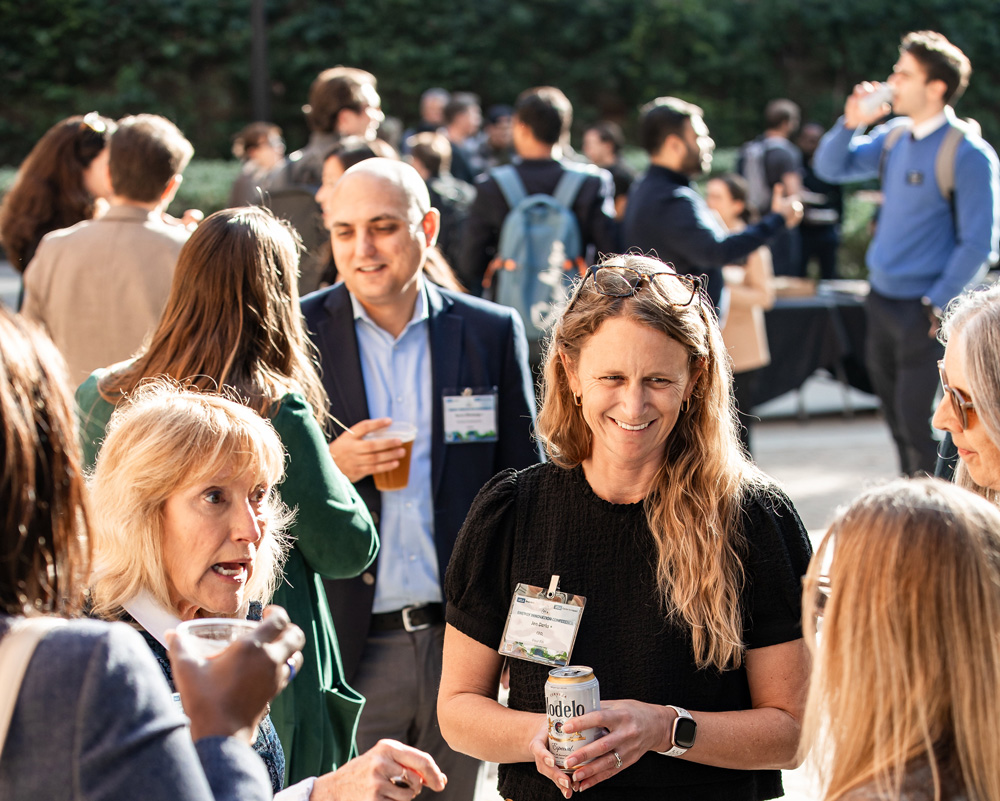
5. Despite our dire circumstances, there is hope.
There are tens of thousands of climate tech startups (45K in 2022, according to statista.com), and the sector is growing. They’re working on everything from analytics to getting steel in the ground for new charging stations, to material science to make batteries more reliable, cost effective, and safe. They’re focused on removing carbon, reducing emissions from transportation, recycling precious minerals, and ensuring everyone has access to these advancements so the transition and future is equitable. They’re creating the solutions that legacy businesses, and whole new industries, will utilize as they move into the future.
I couldn’t be more humbled by the trailblazers I met that day and every day. Without them, there would be no vision of the future to race toward. They may seem like nerds to some people, but they’re idols to me. As Kyle Breuer of Pencil Energy stated, “we need a lot of people looking at blank pieces of paper, and you kind of have to be an outcast to have that thinking.” It’s our mission to make as many climate startups successful as we can. To communicate their solutions to investors and future employees in compelling ways. It’s okay to be cool or unique or bold, and who better to earn those descriptors than the innovators saving us all.
Loved this read? Join our office hours to learn how these learnings might apply to your brand.
